Ectoparasites
1/50
There's no tags or description
Looks like no tags are added yet.
Name | Mastery | Learn | Test | Matching | Spaced |
|---|
No study sessions yet.
51 Terms
What is Ctenocephalides Felis?
A common flea that infests small and large animals
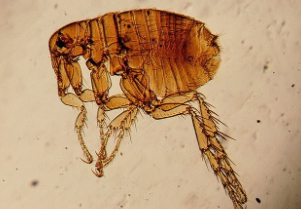
What is this ectoparasite?
Ctenocephalides felis (flea of large and small animal)
What is a lair parasite?
A parasite that spends most of their life off the host and cluster in bedding, nests, etc.
What is an example of a lair parasite?
Fleas
What are common signs of damage from fleas?
Hypersensitivity, Pruitis, Alopecia, Anemia
Is “Cat flea typhus - Rickettsia felis” a vector for disease?
Yes
How do you diagnose fleas?
Flea comb, often times the comb recovers flea dirt (dark brown coffee ground appearance that turns reddish brown on wet white absorbent material)
What is pediculosis?
Infestation of lice!
Anoplura vs mallophaga are both examples of what?
Lice
Can birds or cats host anoplura lice?
No

What is this ectoparasite?
Anoplura (sucking lice) these often have larger bodies and long/narrow heads.
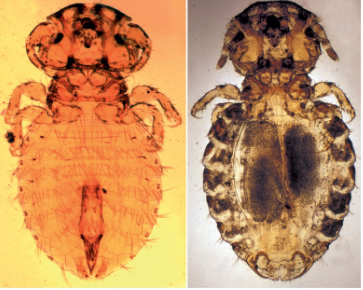
What is this ectoparasite?
Mallophaga lice (biting and chewing) broad/round head
What are common signs of damage from lice?
Pediculosis can lead to weight loss, decreased milk production, damaged hair/hide.
What serves as an intermediate host for Dipylidium Caninum?
Lice
One of the most common signs we see for Anoplura lice is?
Anemia
One of the most common signs we see for Mallophaga lice is?
Pruitis
How do we diagnose lice?
Nits can often be visualized along hair shaft, we can also use flea combs, cellophane tape, thumb forceps and hair clippings
What is Myiasis?
Fly larvae developing in tissues or organs of vertebrate hosts
__________ Feeds on dead tissue, exudate and debris it can also travel through epidermal layer into subcutis - What is this describing?
Larvae (Maggots)
Cochiomyia hominivorax is commonly known as?
New world screw fly
This fly is currently eradicated in the United States and monitored by APHIS - What is it?
New world screworm fly
What damage can new world screw worm flys cause?
Eggs laid at edge of uncontaminated wounds hatch into larvae that bore into healthy tissues, they are also economically devastating in domestic livestock.
These flies are the PRIMARY invader of living tissue - Pick from below
New world screw worm fly
This fly infests rodents, rabbits and occasionally dogs & cats what is it?
Cuterebra spp.
This fly infests the dorsal subcutis of cattle the adults look like bees and are called “Heel flies” what fly is this describing?
Hypoderma spp.
Hypoderma spp is commonly known as?
Ox warble or cattle grub
Cuterebra spp is commonly known as?
Wolf Warble
What damage is caused by Cuterebra spp and Hypoderma spp?
Damage to surrounding tissue, hide damage and Anaphylaxis if larva ruptures while being extracted
Gasterophilus spp is commonly known as?
Horse bots
This fly can deposit small, yellowish oval eggs on the tips Of horse hair often their legs what is it?
Gasterophilus spp (Horse bots)
What damage is seen from Gasterophilus spp (horse bots)
Larvae attach to stomach and can lead to ulcers, colic and rupture of their stomach
Horses lick their hair and swallow the eggs of _______ and the larvae then hatch in their stomach - which fly is this describing?
Gasterophilus spp (Horse bots)
Infestation by mites is called?
Acariasis
The dermatological condition often caused by mites is called ?
Mange
What are “arachnids”?
Mites
What is Sarcoptidae commonly known as?
Burrowing mites like sarcoptes scabiei and notoedres cati
What is Psoroptidae commonly known as?
Surface mites like Chorioptes spp, Psoroptes spp, Otodectes cynotis and Cheyletiella parasitovorax
What are Sarcoptidae mites commonly known as?
Scabies mites
Are sarcoptes scabiei (scabieis mite) contagious?
Yes to members among the same species! They are host specific each has its own variety
Is Sarcoptidae mites (scabies mites) zoonotic?
Yes but its self limiting
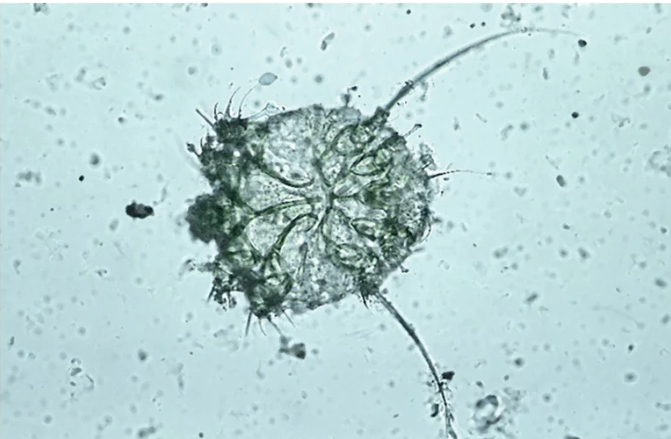
What is pictured?
Sarcoptidae Mite (scabiei mite)
What is common signs of damage from Sarcoptidae mites?
Extreme Pruitis, face-ear-elbows and ventral abdomen often affected in dogs but rare in cats. In horses and ruminants their head, neck and shoulders are often affected.
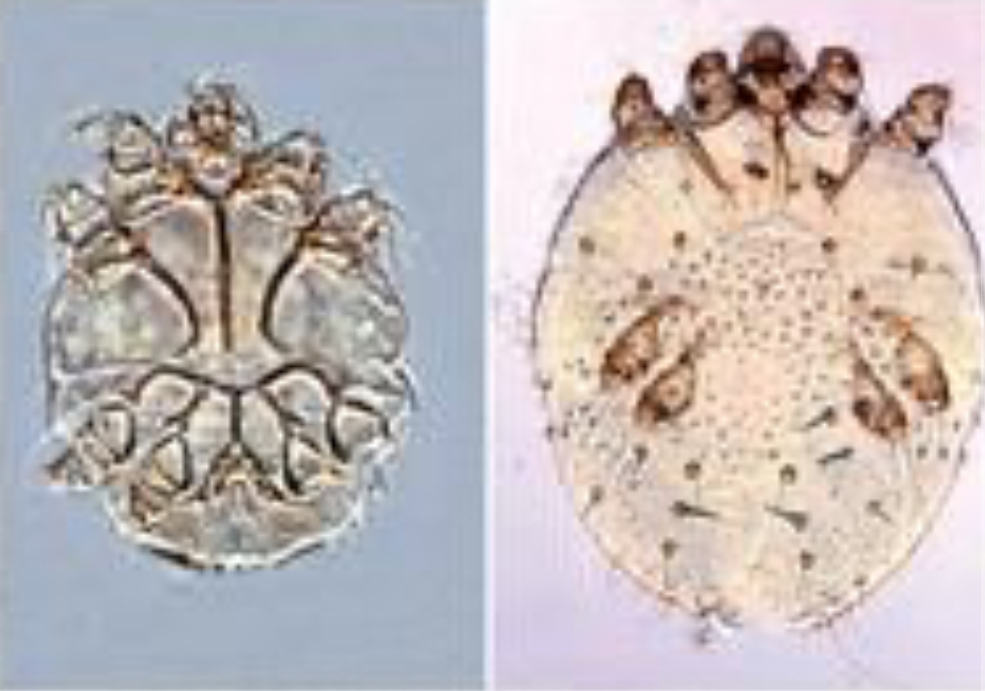
What is this ectoparasite
Sarcoptes scabiei - identify by the long unjointed pedicel, and caudal anus.
How would you diagnose sarcoptes scabiei?
Skins scrape
What is Notoedres cati commonly known as?
Feline head mange
Can Notoedres cati effect rabbits?
Yes!
True or false; Notoedres cati is highly contagious and zoonotic but often self limiting. It presents very similar to sarcoptes spp in presentation and behavior.
True
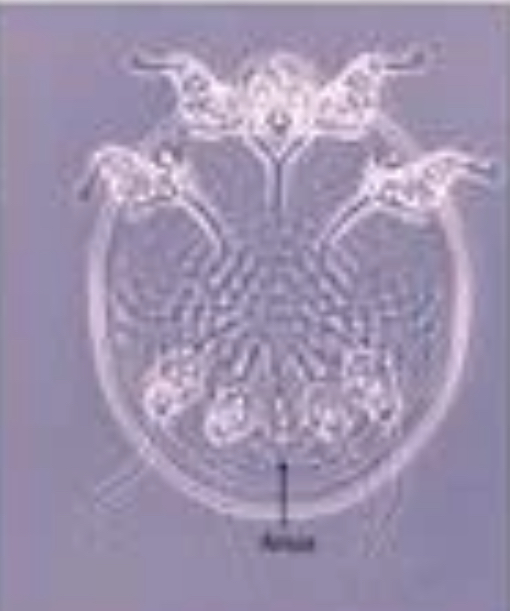
What is this?
Notoedres cati
How would you diagnose Notoedres cati?
A superficial skin scrape